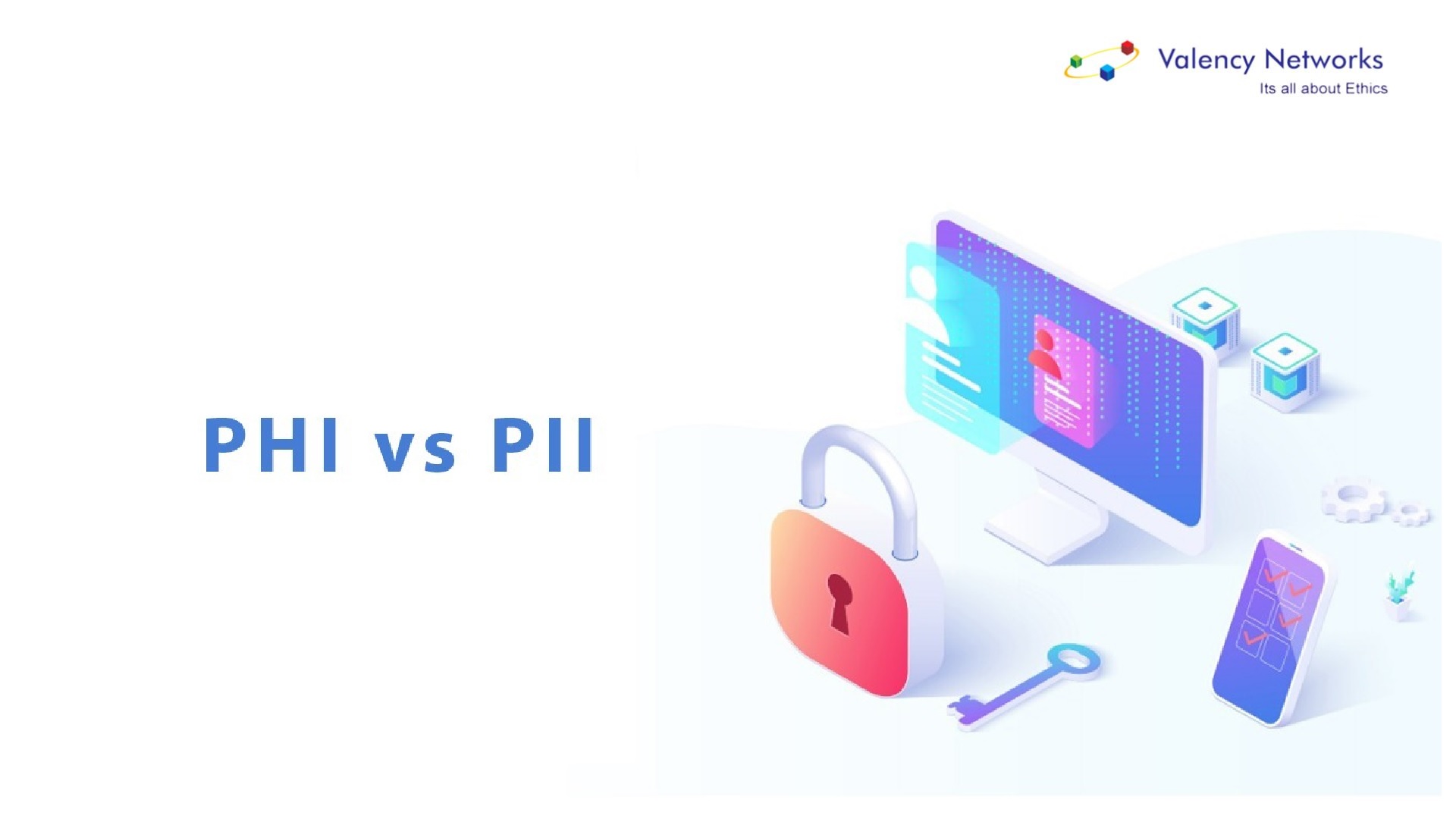- DORA Compliance – A Complete Guide by Valency Networks - 31/01/2025
- Is ICMP Timestamp Request Vulnerability worth considering - 31/12/2024
- Understanding Threat Intelligence in ISO 27001-2022 - 21/11/2024
PII, PHI, and ePHI are all related to data privacy and security, particularly in the context of sensitive information in various industries like healthcare and finance. Here’s an explanation of each term and their differences:
PII (Personally Identifiable Information):
PII refers to any information that can be used to identify an individual. This can include a person’s name, address, phone number, email address, Social Security number, financial information, and more. PII is a broader concept and can encompass information beyond just healthcare-related data.
PHI (Protected Health Information):
PHI specifically refers to individually identifiable health information that is collected, transmitted, maintained, or used by a healthcare provider, health plan, or healthcare clearinghouse. This information is protected under the Health Insurance Portability and Accountability Act (HIPAA) in the United States. PHI includes information about an individual’s medical condition, treatment, or payment for healthcare services.
ePHI (Electronic Protected Health Information):
ePHI is a subset of PHI that is created, received, stored, or transmitted electronically. As technology has become increasingly prevalent in healthcare, ePHI has gained significance. Electronic health records (EHRs), digital scans, and other electronic forms of health information fall under the category of ePHI.
In summary, the main differences are:
PII: This is a broader term that encompasses any information that can be used to identify an individual, including personal and financial details.
PHI: This term specifically refers to individually identifiable health information, regulated by laws such as HIPAA, and includes information related to an individual’s medical condition, treatment, or payment for healthcare services.
ePHI: This is a subset of PHI that pertains specifically to electronic forms of health information, such as electronic health records, digital images, and other electronic formats.
It’s important to note that protecting both PHI and ePHI is crucial for ensuring patient privacy and complying with relevant regulations.
Examples of PII (Personally Identifiable Information):
– Full Name
– Home Address
– Phone Number
– Email Address
– Social Security Number
– Date of Birth
– Driver’s License Number
– Passport Number
– Bank Account Number
– Credit Card Number
– Personal Identification Numbers (PINs)
– Biometric Data (fingerprint, retina scan)
– Mother’s Maiden Name
– Place of Birth
– Username or Account ID
Examples of PHI (Protected Health Information):
– Medical Diagnosis or Condition (e.g., diabetes, cancer)
– Treatment Information (e.g., prescribed medications, surgeries)
– Medical History (e.g., allergies, past illnesses)
– Lab Test Results (e.g., blood tests, X-rays)
– Radiology Images (e.g., MRI, CT scans)
– Health Insurance Information
– Billing and Payment Information for Healthcare Services
– Medical Record Numbers
– Patient Identifiers (e.g., hospital account numbers)
– Dates of Medical Treatment or Hospitalization
– Any Information that Can Identify the Patient’s Medical Records
Examples of ePHI (Electronic Protected Health Information):
– Electronic Health Records (EHRs): Patient records stored in digital format that include medical history, diagnoses, treatment plans, medications, and other health-related information.
– Medical Images: Digital X-rays, MRI scans, CT scans, and other medical images that contain patient information and diagnostic data.
– Lab Results: Electronic records of laboratory tests, blood work, pathology reports, and other diagnostic test results.
– Prescription Information: Electronic prescriptions, including medication names, dosages, and instructions provided by healthcare providers.
– Billing and Payment Information: Electronic records of medical bills, insurance claims, and payment details related to healthcare services.
– Telehealth Communications: Audio, video, or text-based electronic communications between patients and healthcare providers during telehealth consultations.
– Emails and Electronic Correspondence: Any emails or electronic messages exchanged between healthcare professionals containing patient information or treatment discussions.
– Health Apps and Wearable Devices: Data collected from health and fitness apps, wearable devices like fitness trackers, and mobile health monitoring devices.
– Healthcare Portals: Patient portals that provide electronic access to medical records, appointment scheduling, test results, and communication with healthcare providers.
– Research Data: Electronic data collected for medical research purposes that contain patient information, such as genetic information, clinical trial data, and research findings.
– Remote Patient Monitoring: Electronic data collected from devices that monitor patients’ vital signs and health conditions remotely, such as glucose monitors for diabetes management.
– Health Information Exchanges (HIEs): Electronic systems that allow different healthcare organizations to share patient health information securely.
How Valency Network can help you protect your personal information?
Valency Networks provides robust security solutions and cutting-edge technologies to keep your data safe and sound. Through comprehensive vulnerability assessments and penetration testing, we identify vulnerabilities in your systems and applications and provide actionable insights to strengthen your defences. Valency Networks has also successfully completed HIPAA and GDPR examinations, bringing a uniform, standardized approach to information security systems to cater to clients worldwide.
So, please sit back and relax, knowing that we have your back, protecting your personal information like a trustworthy cyber security expert.
Related Links:
https://www.valencynetworks.com/it-audit-services/gdpr-compliance.html
https://www.valencynetworks.com/it-audit-services/hipaa.html
https://gdpr.eu/
https://www.hhs.gov/hipaa/index.html
https://www.ncbi.nlm.nih.gov/books/NBK9573/

